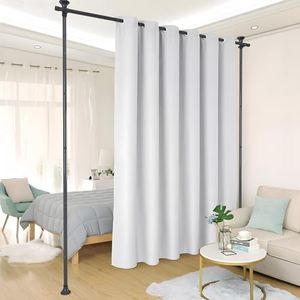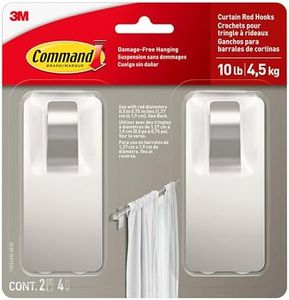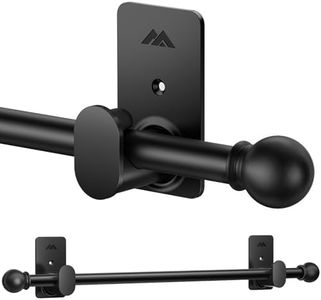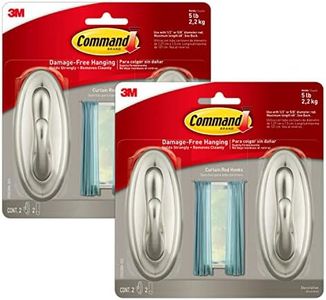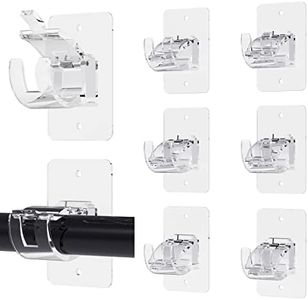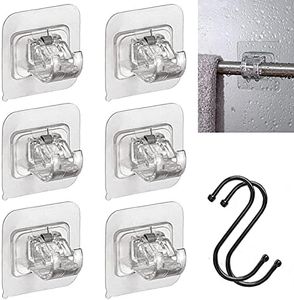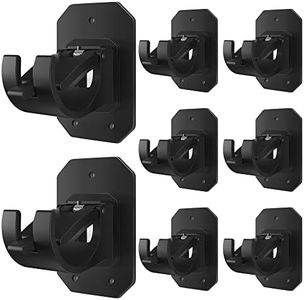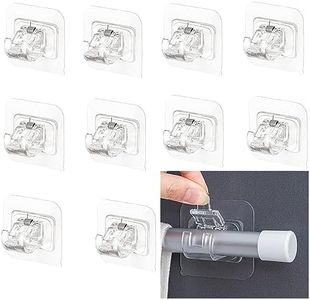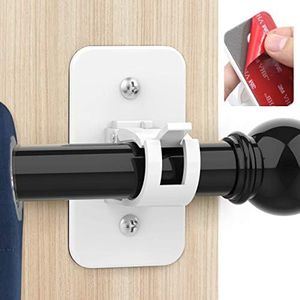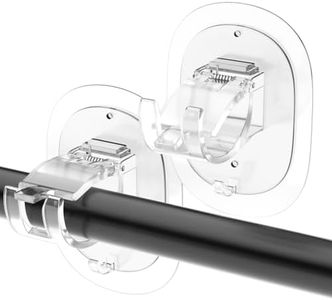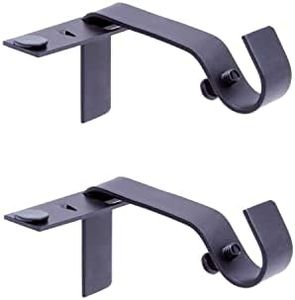We Use CookiesWe use cookies to enhance the security, performance,
functionality and for analytical and promotional activities. By continuing to browse this site you
are agreeing to our privacy policy
10 Best Curtain Rods Without Nails
From leading brands and best sellers available on the web.Buying Guide for the Best Curtain Rods Without Nails
Choosing curtain rods that do not require nails is a great solution for renters, people who wish to avoid wall damage, or anyone who wants a quick and easy installation. The main goal with these products is to find an option that holds your curtains securely without needing to drill holes or use wall anchors. To select the perfect no-nail curtain rod, you'll want to consider the installation method, strength, adjustability, and how well it suits your decor and window size. Here are the most important specifications to keep in mind when shopping for this type of curtain rod:Installation MethodThe installation method describes how the curtain rod is secured to your window frame or wall without nails. Common options include tension rods that use spring force between two surfaces, adhesive brackets that stick onto the wall, or hooks that latch onto existing moldings. Choosing the right method depends on your window type (recessed, flat, or with moldings), the weight of your curtains, and whether the surface can handle adhesive or pressure. If your curtains are lightweight and the window is sized for it, tension rods work well and are easy to adjust. For heavier curtains or tricky surfaces, adhesive brackets may be stronger but make sure the wall is smooth and clean for the best results. If you have decorative moldings, hooks can be a good solution without leaving any marks.
Weight CapacityWeight capacity indicates how much heaviness the rod and its installation method can safely hold. This is crucial because choosing a rod with too low a capacity may result in it falling down or the adhesives failing. Lightweight rods are suitable for sheer or thin curtains, while heavier-duty rods or adhesive options are needed for blackout or thick curtains. Always check the manufacturer's recommended weight limit and match it to your curtains: measure or estimate your curtain set’s total weight for the most secure fit.
Adjustability and Length RangeAdjustability is about how much the rod can expand or contract to fit different window widths. Tension rods and many adhesive bracket rods are adjustable, with a specified minimum and maximum length. Selecting the appropriate length segment is important—short rods are meant for small windows or cabinets, while longer or extendable rods are needed for larger windows. Measure your window opening carefully and pick a rod that fits within, but does not stretch, to the absolute limit of its specification; this ensures better strength and stability.
Rod DiameterRod diameter refers to the thickness of the curtain rod. Thicker rods are stronger and support heavier curtains, while thinner rods are ideal for sheer or cafe curtains. The rod’s diameter also affects how your curtain rings or grommets slide—make sure they fit the chosen rod size. Pick a diameter that is strong enough for your curtain weight and fits the style you prefer; for heavy fabric go for thicker rods, but for light materials and smaller windows, slim rods work well.
Finish and StyleFinish and style refer to the exterior look and design of the rod, including the color, material (like metal or plastic), and decorative finials (the ends of the rod). This is mostly about matching the rod to your room decor. Whether you want a rod that blends in for a minimalist look or adds a decorative element, take into account the visible part of the rod and how it complements your curtain and room style; choose a finish that won't clash with your hardware or curtains for a more cohesive appearance.
